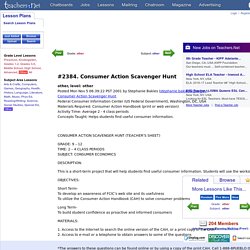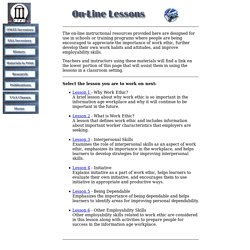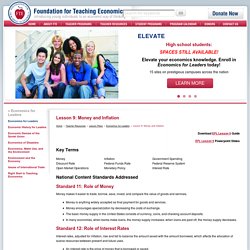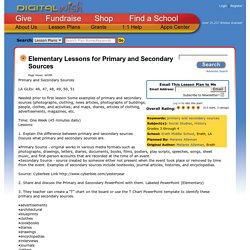

Book Review ~ Wilson's Ghost: Reducing the Risk of Conflict, Killing, and Catastrophe in the 21st Century. PublicAffairs o 2001 o 240 pages o $24.00.

Where Children Sleep. Hiroshima remembers atomic bomb. World History Free Interactive Test-Prep Games. History - The Age of Steam: The Cartoon as Source Materia. Natural Law. The term "natural law" is ambiguous.

It refers to a type of moral theory, as well as to a type of legal theory, but the core claims of the two kinds of theory are logically independent. It does not refer to the laws of nature, the laws that science aims to describe. According to natural law moral theory, the moral standards that govern human behavior are, in some sense, objectively derived from the nature of human beings and the nature of the world. While being logically independent of natural law legal theory, the two theories intersect. However, the majority of the article will focus on natural law legal theory.
What Is Natural Law? David Christian: The history of our world in 18 minutes. U.S. Bureau of Labor Statistics. EconEdLink. Consumer Action Scavenger Hunt (other, other) ).

Concepts Taught: Helps students find useful consumer information. CONSUMER ACTION SCAVENGER HUNT (TEACHER'S SHEET) GRADE: 9 – 12 TIME: 2 – 4 CLASS PERIODS SUBJECT: CONSUMER ECONOMICSDESCRIPTION: This is a short-term project that will help students find useful consumer information. Students will use the worksheet provided to search for answers on the Federal Consumer Information Center’s (FCIC) Consumer Action Website or in the Consumer Action Handbook. This fun and dynamic lesson will provide young consumers with information and tools that will be useful the rest of their lives. Money Lessons: A Guide to Financial-Literacy Resources. Helping your students get a handle on finance doesn't have to take up a big chunk of your school year, especially if you have the right lessons at your fingertips.

Whether you teach fourth-grade social studies, seventh-grade math, or high school economics, chances are you can begin online to plan a money-management class. From downloadable lesson plans that take up one class period to online games that teach key concepts, Edutopia has found the Web resources that can get you started. On-line Lessons. The on-line instructional resources provided here are designed for use in schools or training programs where people are being encouraged to appreciate the importance of work ethic, further develop their own work habits and attitudes, and improve employability skills.

Teachers and instructors using these materials will find a link on the lower portion of this page that will assist them in using the lessons in a classroom setting. Select the lesson you are to work on next: Lesson 1 - Why Work Ethic? American Antitrust Institute. The Fair Fight Film Initiative is an educational program designed around the award-winning PBS film, “Fair Fight in the Marketplace,” that highlights the history and importance of antitrust policies in strengthening our market-based economy.

The Fair Fight in the Marketplace Initiative will: provide practical understanding of antitrust and the legal system that can be useful to people in their everyday lives;promote awareness of current issues and controversies in the antitrust arena;improve understanding of government's role in implementation of antitrust laws and trying to assure fair business practices;encourage effective and informed civic decision making about law and public policy related to competition and market fairness;improve basic civic skills including creative and critical thinking, communication, observation and problem-solving To purchase Fair Fight in the Marketplace for your classroom use, please contact AAI President Diana Moss at dmoss@antitrustinstitute.org.
Lesson 9: Money and Inflation. Lesson 9: Money and Inflation Download EFL Lesson 9 Guide EFL Lesson 9 Powerpoint Slides Key Terms National Content Standards Addressed Standard 11: Role of Money.

2015's Top 10 Legislative Issues to Watch. 2015 is over.

Instead of reading about the past, check out 2016's issues to watch. States and localities will spend much of their time this year grappling with troublesome new realities and trying to work out their relationship with Washington. New realities are a given in any governmental year, but the 2015 crop includes some unusually potent ones. Legislators will be dealing with widespread water shortages, dwindling transportation funds, the emergence of new drugs that threaten to blow up Medicaid budgets, and revised pension accounting rules, among other challenges.
U.S. GOVERNMENT > Introduction to the U.S. System > Principles of Democracy. United States (U.S.) Constitution for Kids — Activities, Quizzes, Puzzles, & More. U.S.

Constitution Activities Welcome to the Fun Zone at Constitutionfacts.com where you'll find U.S. History and Current Issues for the Classroom. Congress for Kids - Interactive, Fun-filled Experiences About the Federal Government.
"Did You Know?/Shift Happens" (Version 6, 2012) History - World Wars: Reform, Coup and Collapse: The End of the Soviet State. THE DUST BOWL. Imperialismtimeline. Elementary Lessons for Primary and Secondary Sources. Primary and Secondary Sources LA GLEs: 46, 47, 48, 49, 50, 51 Needed prior to first lesson Some examples of primary and secondary sources (photographs, clothing, news articles, photographs of buildings, people, clothes, and activities; and maps, diaries, articles of clothing, advertisements, magazines, etc.

Time: One Week (45 minutes daily)Lessons: 1. Explain the difference between primary and secondary sources Discuss what primary and secondary sources are. •Primary Source - original works in various media formats such as photographs, drawings, letters, diaries, documents, books, films, posters, play scripts, speeches, songs, sheet music, and first-person accounts that are recorded at the time of an event. Source: Cyberbee Link 2.